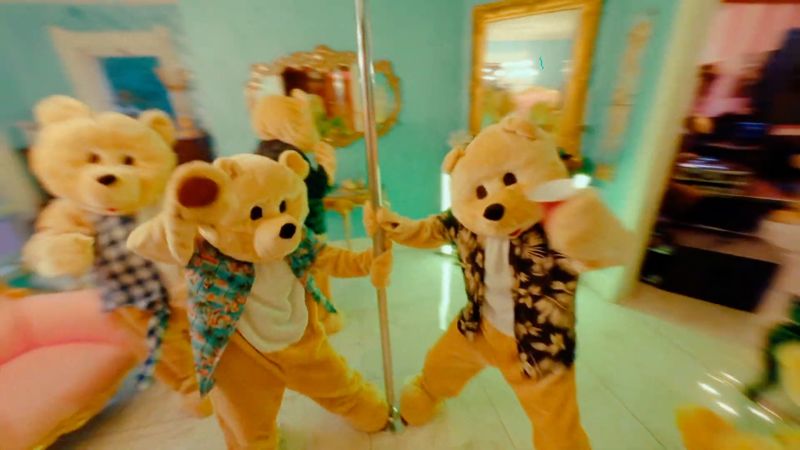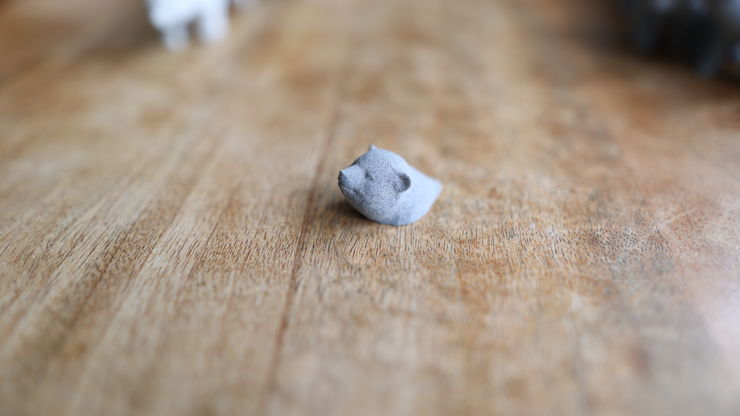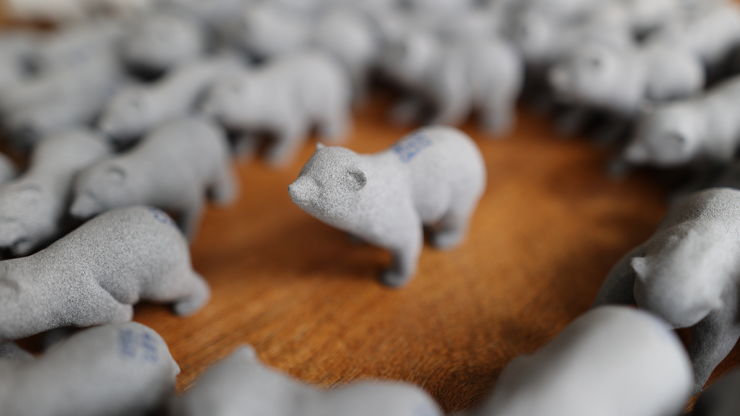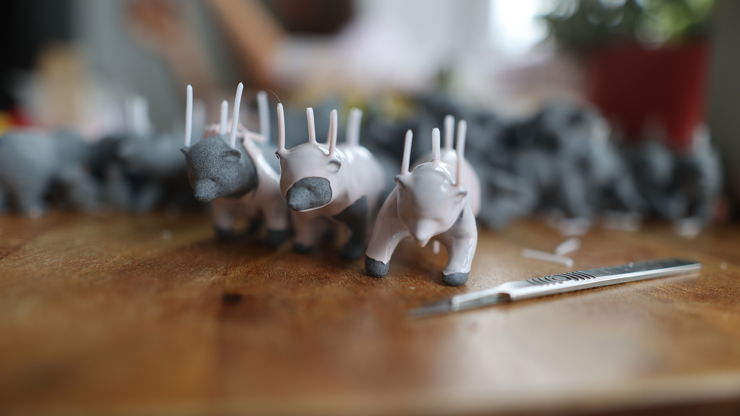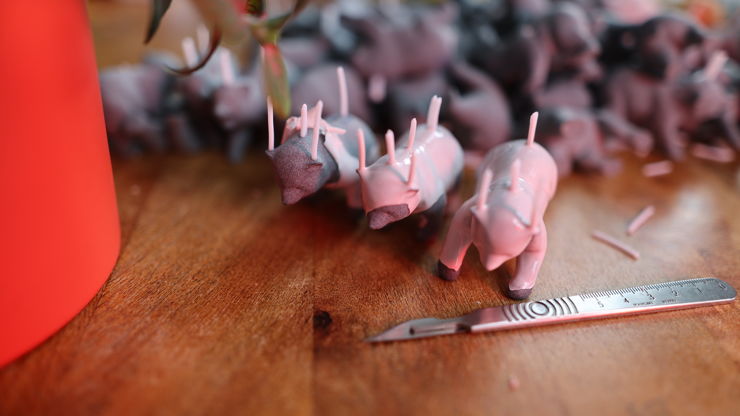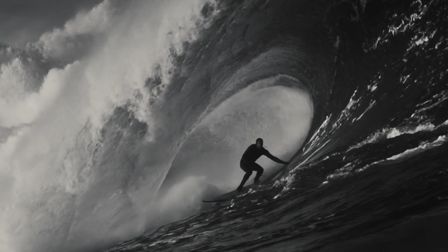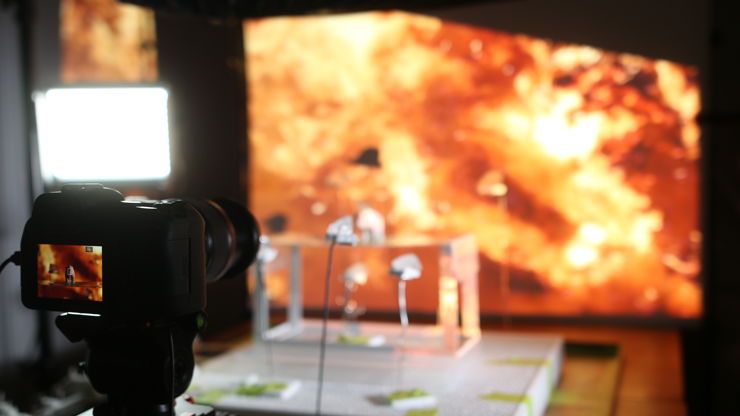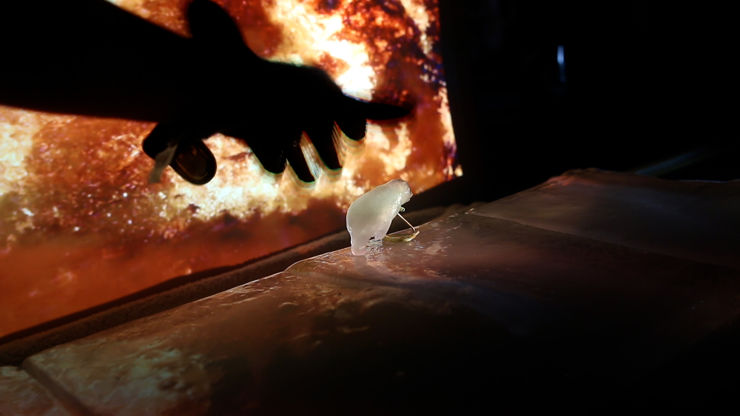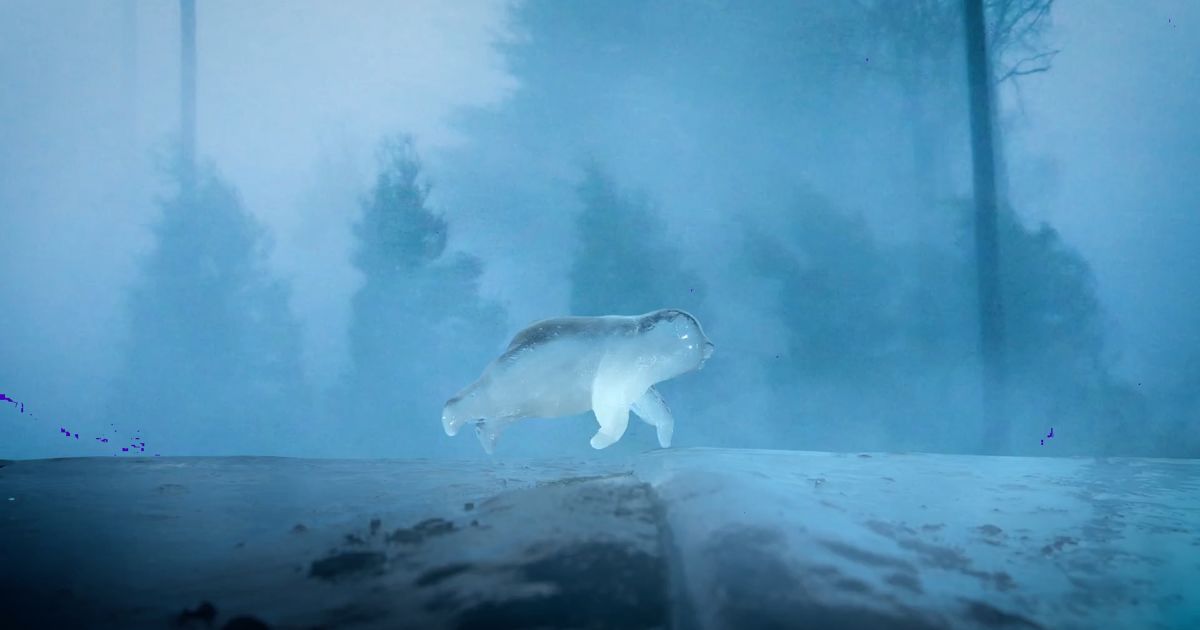How to crack animating with ice
NOMINT director Yannis Konstantinidis talks us through the process behind his painstaking shoot for the WWF, which saw him spend an entire year shooting frozen stop-motion.
How did you get involved with the project?
About a year ago I reached out to WWF and had a long discussion about what is going on in the Arctic. How global warming is exacerbated in the region (by almost three times) and how even though the 1.5C goal has been set and mostly agreed upon universally, world leaders are still negotiating targets, policies and extending deadlines.
In the meantime, ice is melting and will keep melting until there is no ice left. We can negotiate all we want about how and when but sadly “we can’t negotiate the melting point of ice”.
No matter the amount of testing, throughout the whole process the production was hanging from a thread.
This realisation brought the idea of a stop-motion film that is made entirely using melting ice.
The more we would animate the shots the more they would melt, hopefully conveying a real sense of urgency. We pitched it to WWF and they loved it.
Credits
View on-
- Production Company NOMINT
- Director Yannis Konstantinidis
-
-
Unlock full credits and more with a shots membership
Credits
View on- Production Company NOMINT
- Director Yannis Konstantinidis
Explore full credits, grab hi-res stills and more on shots Vault
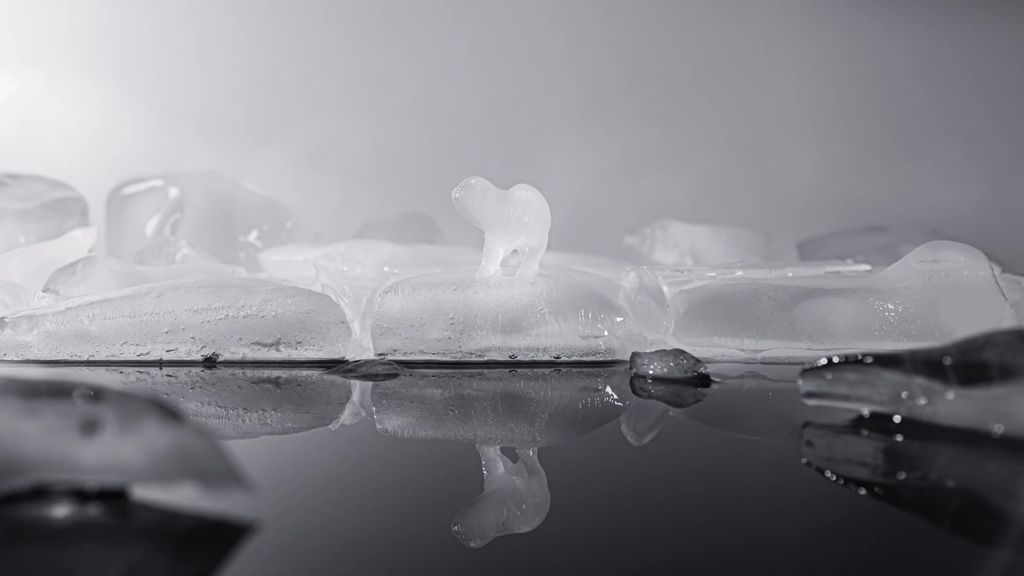
Credits
powered by- Production Company NOMINT
- Director Yannis Konstantinidis
The concept of making stop-motion with ice is fairly audacious. Did you do much in the way of test footage/sculpting to help sell the idea (both to the client and yourselves!)?
We ran literally hundreds of tests to make sure that this is even remotely possible.
We had to test the most efficient way to 3D print the ‘master’ models, how to create the molds, how to freeze the ice to get the desired look, how to store the ice models etc.
I repeatedly warned WWF that it is very possible that in the end, they might not get a film, but they were stubbornly supportive.
But no matter the amount of testing, throughout the whole process the production was hanging from a thread. I knew that there was a very real possibility that when we started shooting we would realise that we wouldn’t be able to get the exact shots we needed and the whole thing would fall apart. It almost did.
Interestingly this made the challenge even more exciting. I repeatedly warned WWF that it is very possible that in the end, they might not get a film, but they were stubbornly supportive.
Luckily they are in the business of trying to solve impossible-looking problems.
What were the early aspects you needed to nail to get the project underway?
The technical side was really important but nailing the story was also extremely important. Marcos Savignano (my co-director on this) and I spent a lot of time creating a very detailed 3D pre-viz to block out every beat of the story.
An 'easy' way of making the film would be to animate it on a computer and make it 'look' like ice. Why was that rejected?
There was no option for me but to make it for real. I’m sure it would have worked fine if we made it in CG but part of the concept for me was that the film is melting away while we are making it. My hope was that this stubborn and almost impossible effort to control ice will be conveyed through the final result. The imperfections that would be obvious from this effort in the final result would highlight the concept that “we can’t negotiate with the melting point of ice”.
We were trying to shoot during the hottest summer in recorded history.
For the first six days of the shoot this became all too real, as we hadn’t managed to wrap a single shot. The ice was just melting too fast. Appropriately, we were trying to shoot during the hottest summer in recorded history. Every time a shot was ruined I was left with a real feeling of hopelessness, not only for the shoot but for the matter at hand. Ironically I think this made us more determined to get it done.
I kept thinking, the medium is the message but also the process is the message. I can’t think of another project where this is more true.

Can you detail how the shoot, as a whole, was constructed? What was the setup and process and how did that differ from the norm?
A month before the shoot we had booked a beautiful studio and were ready to start booking the crew when I decided to run a couple of tests with ‘actual’ shots. That’s when I realised how tough the shoot was going to be and that it would be impossible to run this as a typical shoot, with humane schedules and a strict production plan.
Ice is a horrible medium for stop-motion!
So I decided that the best solution was to shoot everything in my living room! Weirdly enough it felt like the only option. And it probably was. It took three times as long and we had to remove/adjust many of the shots but in the end we did it.
The kids were very happy to have their dining table back and not have a blacked-out living room anymore.
What were the toughest moments? How were the issues solved?
I have never worked on a project that had so many problems to solve.
Ice is a horrible medium for stop-motion! It melts too fast, it breaks too easily, and once it starts melting it’s too late.
Controlling the conditions around the ice was key. We borrowed a freezer that could make ice colder, we lowered the temperature of the shooting stage by using dry ice, we never touched the ice with bare hands, we became very quick in shooting stop motion and drank loads of coffee.
What little details might people miss on first watch?
I think an interesting thing to notice is that in some shots we have a combination of stop-motion and timelapse. In essence, our protagonist needed to stay mostly frozen while the environment had to melt very quickly. It was interesting having to juggle keeping the bear frozen while very quickly blowtorching the environment.
Some people have asked which parts were done in 3D or enhanced in post. Apart from cleaning up the stop-motion supports during the running scenes, everything else is as shot.
The background footage was projected frame-by-frame and shot in camera.
The project is obviously well-timed for COP26. What are you hoping people take away from it?
I hope it helps convey the urgency of the matter at hand on a direct and emotional level. Now is the time to solve the issue once and for all. There is no second chance.
What's up next for you?
I spend the majority of my time running our animation production company NOMINT and promoting our incredible animation directors. Growing NOMINT by creating beautiful animations and nurturing the talent in our roster has been my passion for the past 15 years.
Apart from cleaning up the stop-motion supports during the running scenes, everything else is as shot.
On the side I hope I can keep finding the right partners to create audacious projects like this one. My hope is to show the naturally innovative side of animation through projects like this or the one I did last year, the World’s First Animated COVID Mask.
In the very near future, I ‘m hoping to gather all behind-the-scenes footage of the WWF project and make a vlog about it which will be hosted here.
)

